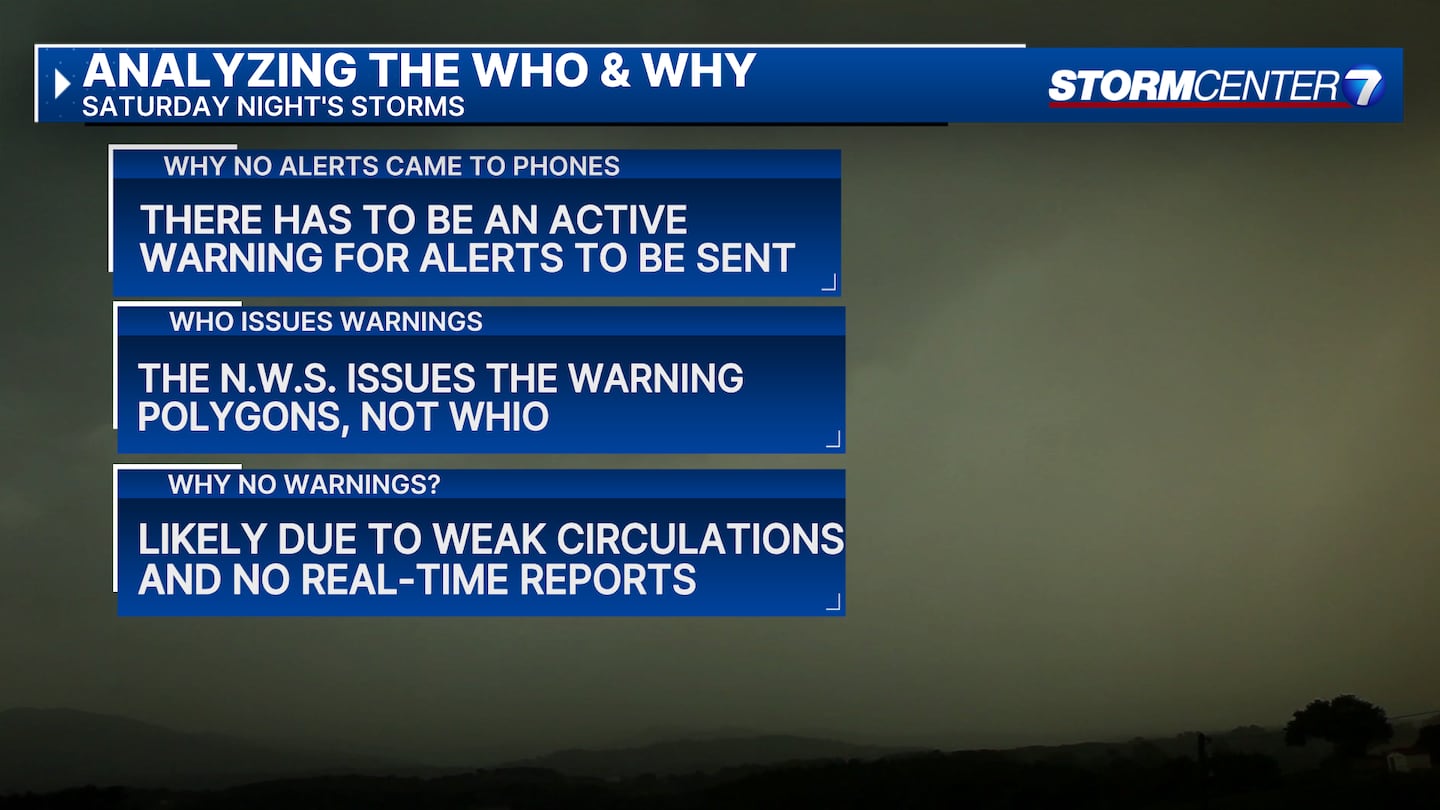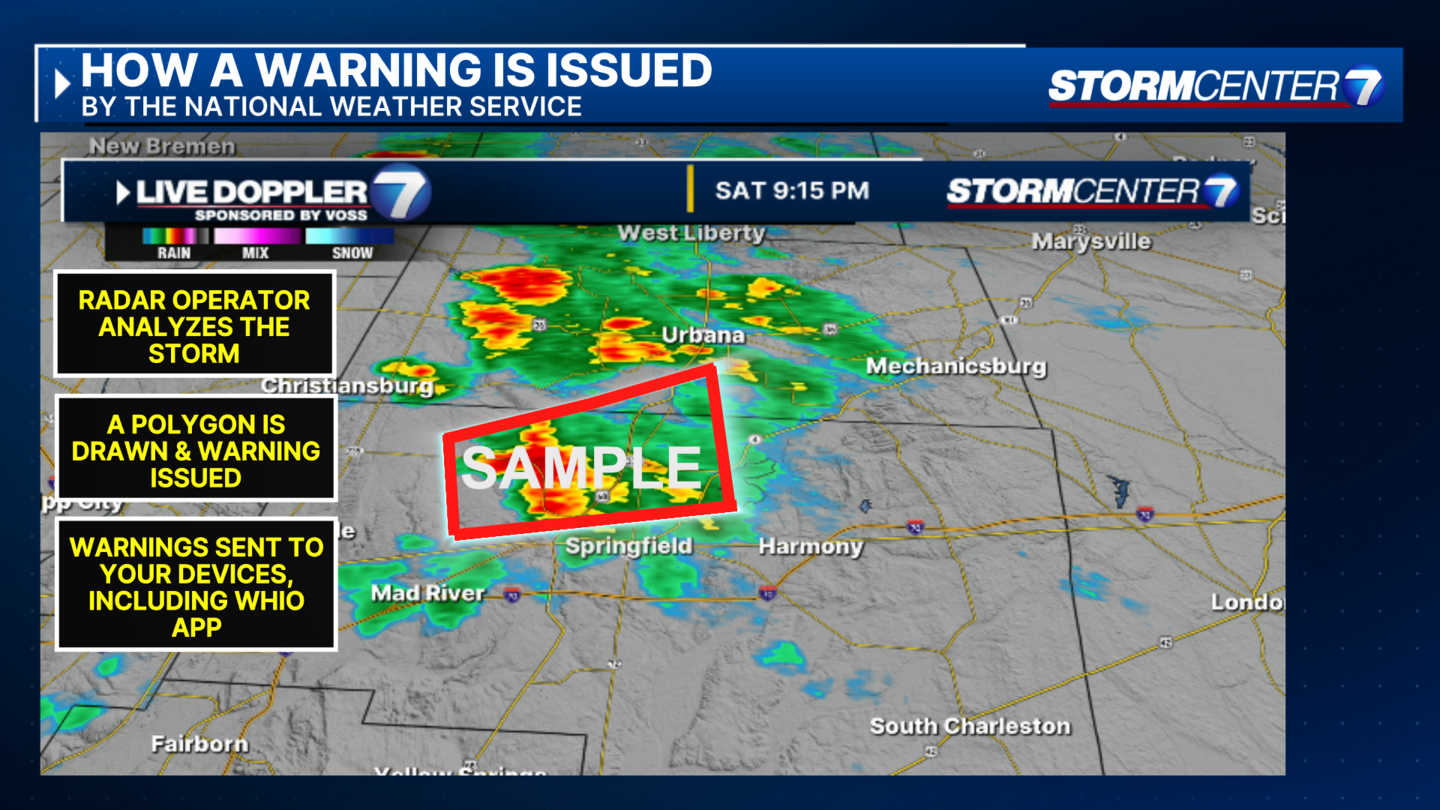MIAMI VALLEY — As is the case with all weather-related warnings, watches, or advisories, the National Weather Service (NWS) is in charge of issuing those various alerts, according to Storm Center 7 Weather Specialist Nick Dunn.
[DOWNLOAD: Free WHIO-TV News app for alerts as news breaks]
Storm Center 7 is not responsible for issuing any warnings and is not permitted to issue any sort of severe thunderstorm, tornado, or any kind of warning.
>>PHOTOS: Sky 7 drone footage shows Clark County storm damage
Last night brought some frustration as to why our WHIO Weather App and other devices did not have a notification come up.
This is because no weather warnings were issued by the NWS, Dunn said.
TRENDING STORIES:
- 2-week-old baby dies after being found unresponsive at area home
- 2 arrested during county-wide call for help at large party in Dayton neighborhood
- Ohio State Highway Patrol cruiser hits, kills 27-year-old
In order for an alert to come across your devices, the NWS has to issue a warning that has a process attached to it.
Breaking down the process of issuing a warning
First, a radar operator at the NWS analyzes the storm. This includes storm motion, intensity, velocity, and looking for any signs of rotation.
If the operator feels there is sufficient rotation or there is a sign that a storm is capable of producing a tornado, large hail, or damaging winds, they would issue a warning. If they feel it is not strong enough, then no warning is issued, according to Dunn.
Next, if the NWS feels a warning is required, they will draft a warning bulletin and a polygon for the areas impacted now and in the next several minutes.
Warnings are no longer county-based, meaning only those in the polygon need to take action, Dunn added.
>>RELATED: Possible tornadoes reported in Clark, Shelby counties; NWS to assess damage
Only then is an alert sent to your devices, including the WHIO Weather App.
Without that critical step of a warning being issued, it will come across as if there was no warning. The app did not malfunction, but it was quiet due to no tornado or severe thunderstorm warning.
So, what led to a lack of warnings last night?
The circulation was brief and weak. The radar operator has to make a decision whether or not to issue a warning.
The warning process from start to finish takes a few minutes sometimes. By the time a warning would have been issued, the rotation would likely have dissipated, Dunn said.
Funnel clouds are not the same as tornadoes in that funnel clouds do not produce damage. Only when contact is made at ground level can it be called a tornado.
As another reminder, tornadoes can happen from thunderstorms and even rain showers that have no warning, Dunn said.
Radar samples the sky every few minutes, meaning gaps in the data allow time for brief and quick tornadoes like this.
While it is difficult to understand, this is a situation that does not happen frequently, and tornadoes in themselves are rare.
[SIGN UP: WHIO-TV Daily Headlines Newsletter]
©2025 Cox Media Group

















